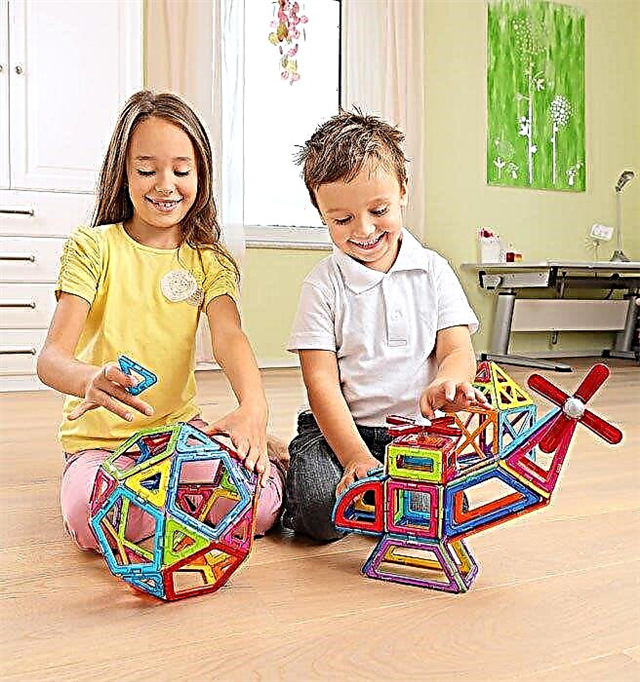
Window textiles are an indispensable element of a child's room, designed to provide not only comfort, but also the uniqueness of the interior of the room. Every year, something new appears, allowing you to create an original design of rooms and not repeat old solutions, there is also an eternal classic, and something that seemed eternal a couple of years ago is no longer perceived as relevant. To keep track of all this, let's try to consider which curtains for the children's room are relevant today.
Features and Benefits
Contrary to popular belief, the main requirement for curtains for a children's room is not an attractive appearance at all, but practicality. First of all, the product should fulfill its main function - to regulate the amount of light entering the room. A solid, heavy and dense curtain is able not only to limit too bright sunlight, but also to prevent draft, improve the thermal insulation of the room and not let outside sounds from the street. When choosing a material and a specific model, be sure to first check if all the options you like correspond to your practical needs, and only then start choosing based on purely visual qualities.

Don't forget about safety too. In recent years, more and more actively discussed the harm that synthetic materials can cause to a child, so consumers are expressing massive interest in a 100% natural product.
Curtains are almost the only product for the home, where complete naturalness is not only not pursued, but even not always welcomed.
The fact is that many natural fabrics quickly lose their original qualities - they fade in the sun, fade during washing, stretch, and so on. It is generally accepted that the content of useful synthetics in an amount of no more than 15-20% not only does not harm the child, but also contributes to a longer operation of the curtain.
Classic curtains are not the only way to close a window, because there are also blinds, roller shutters and many other devices that replace traditional window textiles. Consumers who prefer curtains describe the reasons for their choice in their favor:
- Fabric is the most familiar, and therefore a convenient way to protect a child from excess light, noise and draft, because it fits perfectly into any interior style.
- The material is presented in a huge variety, which allows you to achieve any set goals and match the selected color palette of the room.
- Unlike most other materials used in this area, only the fabric has a predominantly natural composition, that is, it does not emit harmful fumes and does not provoke allergies.
- No other material creates such a feeling of home comfort and warmth as a classic woven curtain.
Varieties
There is a fairly wide variety of varieties of window textile models. Let's highlight those that are very common today:
- Curtains. Typical long window textiles, completely covering the window, but made of a relatively loose material - it does not block light, but only diffuses it.
Curtains are used either in rooms where natural light is not too bright, or complete with curtains or roman blinds.
- Curtains. Almost the same curtains, but in the form of a reliable barrier for any extraneous irritants. They do not require any additions, but they fit mainly into classic interiors. They can be chic, and if they are properly decorated, then they will become more appropriate in the girl's room.
- Short tulle... A solution designed to beautify rather than useful. Due to its short length, such textiles almost do not cover the window at all and are used exclusively in those rooms that do not suffer from an excess of bright light. A similar design came to us from the Mediterranean countries, where it is traditional, therefore, in our area, short tulle is also used in an environment decorated with a strong southern accent.
- Roman and roller blinds... Two different types of window textiles that have a lot in common. Both are a kind of allusion to the blinds, only made of fabric - a single piece. They can do without any cornice - they are attached to the window opening or even directly to the window frame. They usually correspond in size to the window, they do not close the excess space. They differ from each other only in the way of folding - rolled rolls are rolled up, and Roman ones are gathered in folds.
Types of fabric
A rather large number of different types of fabric are used for sewing curtains, but we are in more detail let's dwell on four of them, which are, perhaps, in the greatest consumer demand:
- Cotton. The material is good for its naturalness and safety, it is durable, relatively resistant to light and water; this fabric perfectly creates an impression of comfort due to its lightness, it is always appropriate due to its simple dyeing in any color. It should be borne in mind that the material wrinkles very much, is relatively easy to wipe off and is able to change shape over time, and careful care is needed, especially if the product is colored.
- Linen. Another natural fabric that is very popular for its strength and durability, as well as for minimal soiling. Flax is not electrified, that is, it does not attract dust, in addition, it is a natural antiseptic, not promoting the growth of fungi and bacteria. Unfortunately, linen also wrinkles quite a bit, but it's a little easier to care for than cotton.
It is so safe for humans that it is even used in surgery for suturing, because it dissolves harmlessly in the body.
- Viscose. This material is often mistakenly considered synthetic - this is true only in terms of the method of production, but in terms of raw materials it is a completely natural product made from wood pulp. The finished result resembles silk both to the touch and due to its characteristic shine; the fabric is perfectly dyed in bright colors and is completely hypoallergenic. Contrary to its artificial origin, it requires careful maintenance.
- Organza... This fabric is originally made of silk or viscose, but in this version it is very expensive and is almost never found today; it is easier to find a cheap polyester version. In general, it has the properties of the above materials, but is the most durable among them. It is widely used for sewing "tulle" curtains and curtains. The pitfall of choosing organza is that you cannot always be sure of the environmental friendliness of the origin of the material.
Designer novelties
The concept of "fashionable" curtains is quite extensible, because every person is still guided more by his own tastes than by fashion. Nevertheless, the general modern trends, in addition to those described above, are worth highlighting.
The palette of curtains is usually either 1-2 tones different from the wall decoration, or is in bright contrast to them.
At the same time, you should not leave the curtain as the only spot of this color in the entire room - it should overlap with other elements of the interior, for example, with the largest piece of furniture or with small accessories like a rug, blanket, and so on.
As for prints, you can still choose curtains with a starry sky or other space theme in the boys' bedroom; bright floral prints will be closer to girls. As always relevant, especially for kids, plots from favorite cartoons and movies, but keep in mind that idols change every year - for example, once insanely popular in the interiors of "Cars" have managed to give way to "Minions". When choosing, pay attention only to those characters that have appeared relatively recently and are heard right now.
Tips for choosing
Material safety requirements seem obvious, but otherwise, when choosing curtains, you should pay attention to three important factors:
- Baby gender... In general, you can choose any color, except pink for boys, however, it is recommended to choose gentle pastel and cream colors in the girls' bedroom, while future men will do something, albeit bright, but more strict.
- Baby age... In the first years of life, too bright colors prevent the child from calming down and sleeping normally, therefore, preference is given to very calm, neutral shades. Preschoolers and schoolchildren, on the contrary, are very fond of brightness and brilliance. As for adolescents, everything is individual there - it's better to ask them themselves.
- Child preferences... You will hardly be able to guess better than the kid himself what he will like the most, so the final choice should be entrusted to him.


Interesting design solutions
Curtains that exploit the theme of the night sky look very bright and colorful - today they are available in dozens of varieties. They usually contrast strongly with the room's palette - like in the first example.

The floral print on the curtains will fit very well into the girl's room.
At the same time, such window textiles are usually made in a light shade, therefore they do not contrast, but only emphasize the general palette of the room, differing by only a couple of tones.

Kids, regardless of gender, will most of all be happy to see their favorite cartoon characters - curtains with them in a fairly wide range are sold in stores, but you can also make them to order.
For information on how to choose curtains for the nursery, see the next video.



